Helen Kirk is passionate about environmental conservation and wildlife. She is a peatland campaigner and field naturalist.
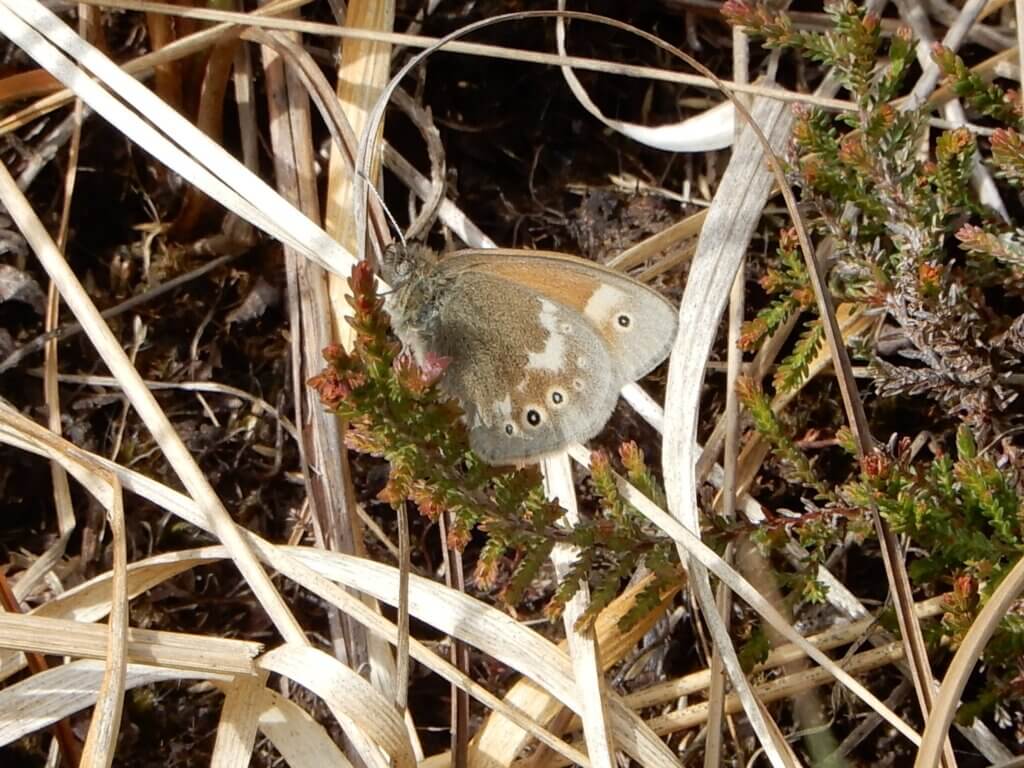
Growing up on a farm on the periphery of Hatfield Moors, and attending school in the 1970s where visits to Thorne Moors were frequent, saw Helen cut her teeth in terms of natural history interest and later campaigning in order to save the sites. In recent years significant discoveries have justified the tenacity needed to secure recognition of Thorne & Hatfield Moors’ value. Sadly still witnessing the need to hold statutory agencies and authorities to account.
This is Helen’s second guest blog here, her first in 2013 posed the question ‘Muzzled Watchdog’ to ‘Toothless Terrier’? after Defra agencies presided over damage to a part of Thorne Moors SSSI.
Hatfield Moors SSSI: Fetch a bucket of water boys?*
In early May nearly one half of one of England’s largest National Nature Reserves went up in smoke. Thorne and Hatfield Moors SSSI are England’s largest former lowland raised mires. They are some 1620 ha (4,000 acres) and 1416 ha (3,500 acres) in extent respectively.

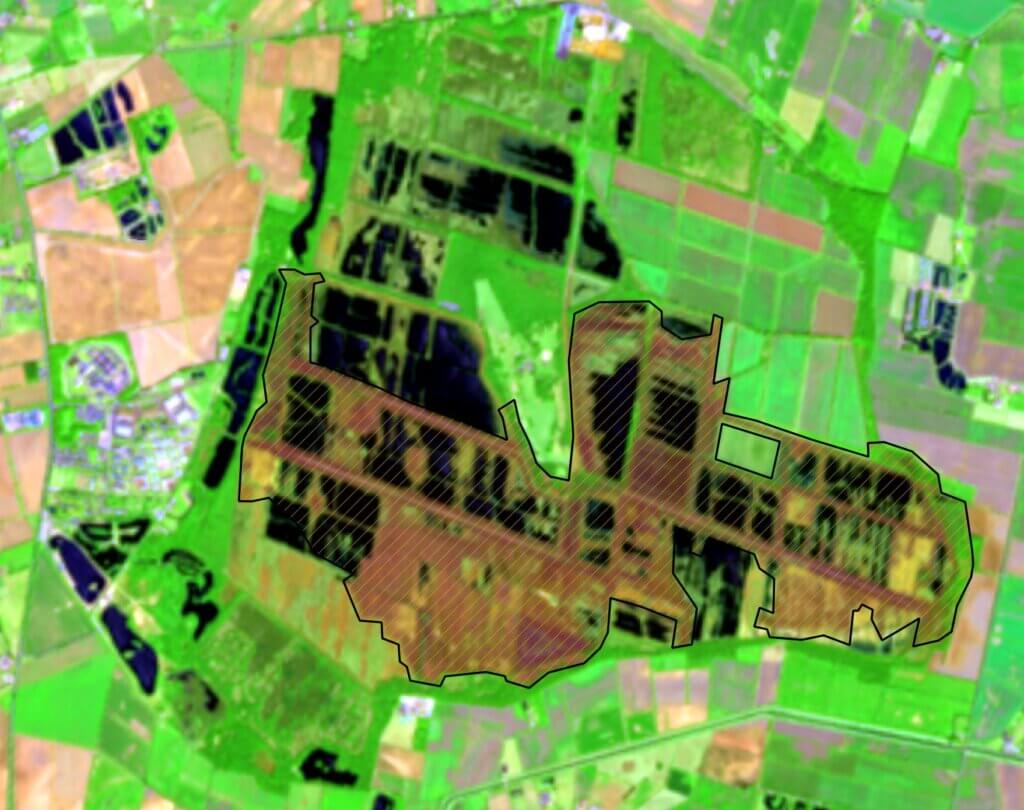
Satellite imagery showing extent of burn on 29 May 2020. Image: Copernicus data (2020)
Following the Peat Campaign of the late 1980s and early 1990s the land was ‘gifted’ to the nation by Fisons the peat extraction company. However, peat extraction continued by agreement with English Nature until another peat campaign saw a buy out of the extant planning consents in 2002 for £17.3M. In 2004 English Nature took on the responsibility for the management of the sites, a move much to the benefit of the mineral extraction company as it removed the need for any afteruse plan or further investment.
The two sites are very different, Thorne is underlain by the clay-silts of pro-glacial Lake Humber, whilst Hatfield is largely underlain by sands and gravels. Consequential of the differing geology the botanical interest is very different and likewise the invertebrate assemblage.
In terms of its invertebrate fauna, Thorne Moors is the richest peatland site in Britain. It contains the fourth largest assemblage of rare species of any British site irrespective of habitat. Hatfield Moor is in the top ten of such sites and is acknowledged as being under-recorded.
So far, the recorded insect fauna of both Moors exceeds 5000 species – around 25% of British fauna – with over 30 Red Data Book species and over 250 nationally scarce species. Six species are known from no other sites in Britain, including three that were new to Britain in 1992. Botanical interest includes royal fern, bog rosemary, cranberry, the insectivorous round leaved sundew and greater bladderwort, and the greater yellow-rattle. Around 235 bird species have been recorded from on the moors, including around 90 breeding species. Nightjar, the species for which Thorne and Hatfield were designated as a Special Protection Area (SPA), fluctuate in numbers, reflecting the tenuous nature and stability of the sites’ breeding population. As recently as 2000 Common Crane returned to Yorkshire and the vast wetland has proved suitable as a breeding habitat. The sites are also important for adders although the population is under increasing stress from habitat change, from rewetting and impact on hibernacula areas, disturbance from visitors, and fires are also a problem.
The sites have also yielded significant archaeological finds. A Bronze Age trackway was discovered on Thorne Moors SSSI in 1972 and a Neolithic one on Hatfield Moors in 2004, both now destroyed.
In recent years various schemes and projects have seen, at a conservative estimate some £22M spent on Thorne and Hatfield Moors. These works include the implementation of a Water Level Management Plan (WLMP) for Thorne Moors SSSI; the WLMP for Hatfield Moors expired in 2006. A European LIFE+ project saw further scrub clearance and work on the delivery of water management. A new office was also built at Hatfield Moors at an additional cost of £2,861,245. Its location, remote from public transport, raises some doubt over NE’s commitment to lowering its carbon footprint. Management consists of a Team Leader, a Senior Site Manager, three Site Managers and just a single Estate Worker and around 80 or so volunteers.
As an example of the continuing potential of the sites for further discoveries, Buckleria paludum, the Sundew Plume Moth, was rediscovered on Thorne Moors in 2018, 127 years to the day after G T Porritt had found it. Historically the Moors have been pillaged for their natural resources and now deserve better. Any attempt at ‘restoration’ – a misnomer in that a site can never go back to the past although there is the opportunity to create something new and equally interesting – represents a further opportunity for carbon sequestration. Sadly on Sunday 17 May a member of the public reported a fire on Hatfield Moors.

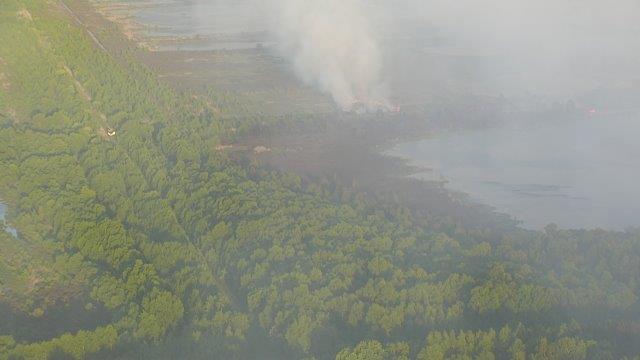
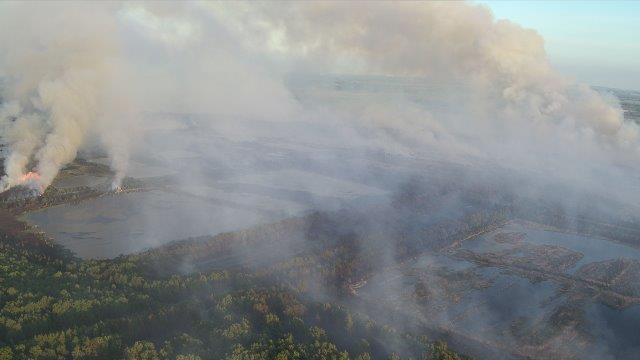
Despite valiant endeavours by the South Yorkshire Fire and Rescue Service the fire raged for five days before Damian Allen, the Chief Executive of Doncaster Borough Council, called it in as a Critical Incident. It is not known why Natural England, the organisation with responsibility for the site, did not call for more assistance earlier. Following the local authority intervention more resources were made available including a helicopter which then spent nine days water bombing the Moor. Fire and Rescue teams were brought in from Humberside, West Yorkshire, Lancashire and Shropshire, but were hampered by a lack of local knowledge. The windy weather exacerbated the spread and eventually the fire reached deep peat where it got hold and is still smouldering as I write this on Day 38 (22 June).
Anyone who knows the site knows that it is difficult terrain to walk with the exception of the area immediately around the new Natural England offices at Boston Park. Because of its accessibility this part of Hatfield is a very popular area for dog walkers, joggers, horse riders and cyclists. Litter is rife and visible ‘wardening’ or visitor engagement negligible. Sadly, far too many of the visiting public appear to treat the National Nature Reserve as a country park type venue and they expect others to tidy up after their mess. There is no area dedicated or managed for picnics and this has seen single use barbecues abandoned in quiet areas where there is no oversight. In this incident, one was left to start a fire which has devastated at least 40% of the Moor.
Whilst the site is currently closed because of health and safety concerns, people continue to visit as there is no policing beyond a few A4 notices posted at various entrances.
As a result of the fire on Hatfield Moors, neighbouring Thorne Moors has been put on high risk alert. It has seen a number of fires in recent years, one in 2017 which saw around 40ha (100 acres) seriously burnt with a number of dead adders amongst other casualties. One in 2019 spotted by volunteers was put out, by local neighbouring landowners. If the summer weather is dry and hot, then the bulldozed timber and brash from the emergency construction of fire breaks on Hatfield Moors, unless removed, present a serious potential fire risk by offering miscreants ready-made bonfires.
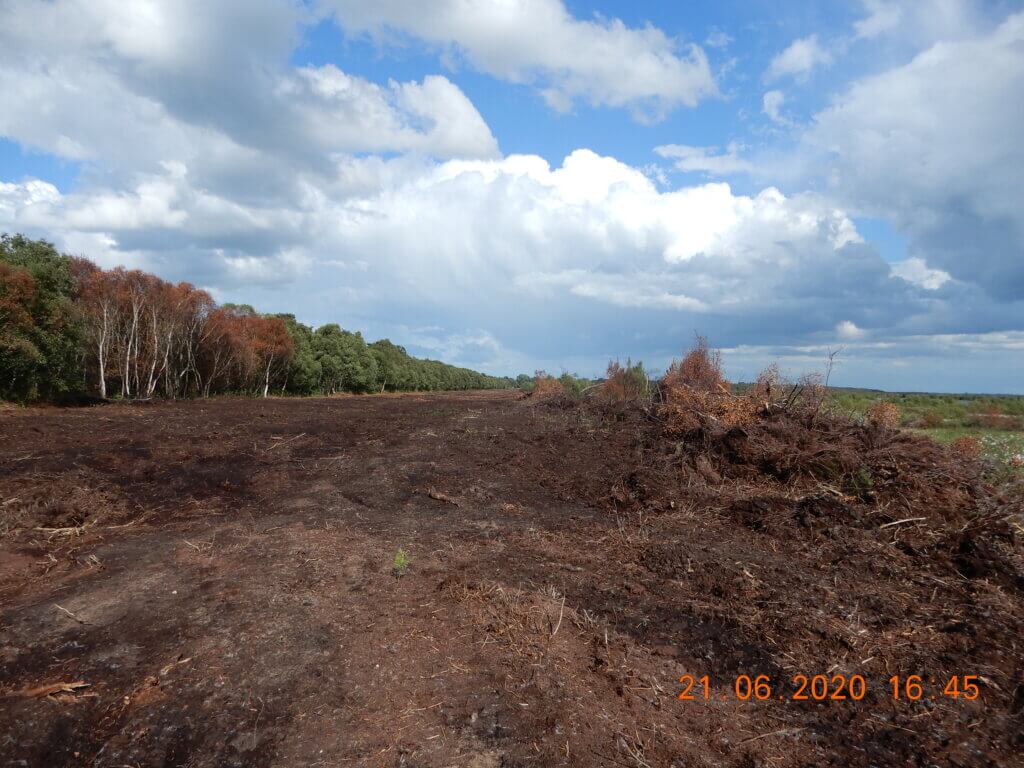
Fire break created to halt the spread of the fire across Lindolme Bank Road. Photo: Helen R. Kirk
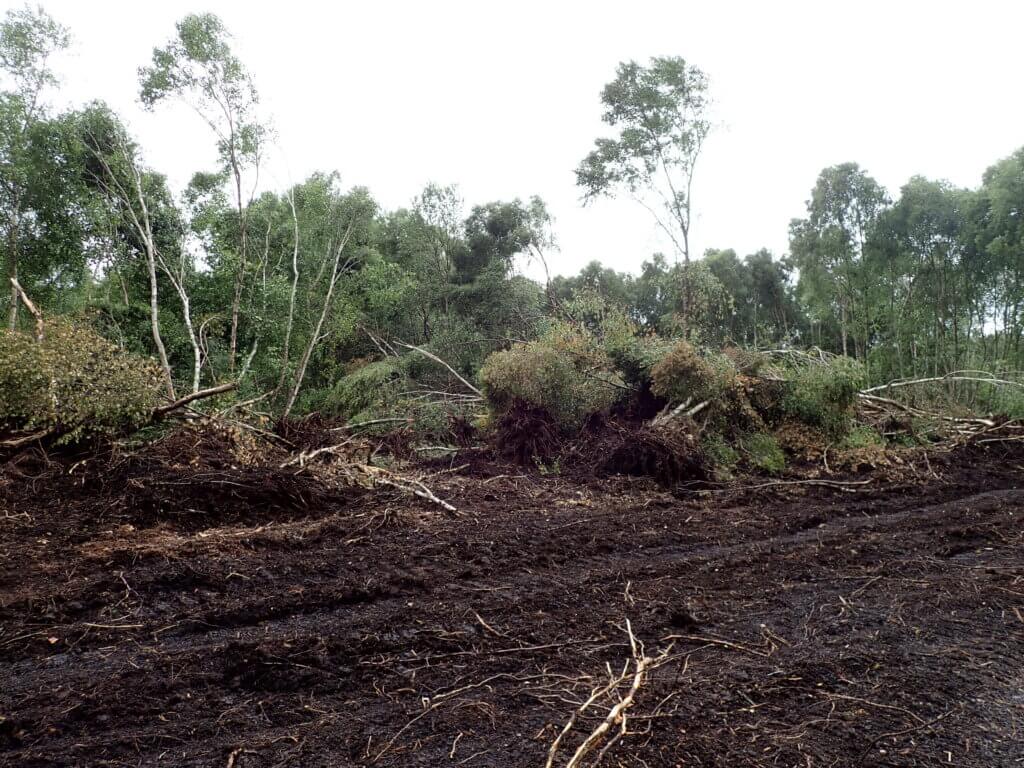
The issue now is whether Natural England and Doncaster Borough Council, along with the Fire and Rescue Services, will undertake a review or investigation into the fire, its causes and how best to ensure that the risk of a future event is reduced or can at least be effectively contained? Concerns have been raised with the statutory agencies and authorities. It is perhaps understandable that there may be a degree of discomfort and embarrassment on their part in that they failed to take the fire seriously early enough and get control in a timely manner. Had a Critical Incident and associated resources been deployed in the first couple of days before the weather changed, then it is not unreasonable to think that that the fire might have been prevented from reaching the deep peat, and ultimately not been as expensive in financial terms to bring under control. The final costs of all aspects are not yet known.
Further to a recent Freedom of Information request, it has been established that Natural England (NE) did not have a “Fire Management Plan”. Reading the document provided under the FoI request reads something along the lines of “phone the fire brigade and run”?
A Defra press release reports “Tony [Juniper] thanked Doncaster Council and SYFRS for their work, and noted that NE is working on a plan to restore the site including a long-term approach to minimise fire risk.” This implies perhaps that NE are now undertaking some kind of reactive belated production of a ‘plan’ of some kind?
The failure to have considered the risk of fire appears to be a major oversight on sites of such importance with a known history of wildfires. Neglecting to carry out fire risk assessments has given rise to severe consequences. The situation had a potential risk to human life (in neighbouring properties) as well as a risk to wildlife and the carbon sequestering resource at the sites. It also risked a nationally important gas storage facility on the edge of Hatfield Moors SSSI. More importantly, the failure placed emergency service staff and equipment at significant risk and it is astonishing that this has been allowed to happen.
What needs to be done to ensure this cannot be allowed to happen again?
- Ensure that there is a basic fire risk assessment for both Thorne and Hatfield Moors SSSI. Following the risk assessment and in collaboration with all agencies and authorities, a Fire Management Plan which identifies nearest water resources, equipment, people, etc. available for use in tackling any future fires on either Moor. This plan needs to be shared widely across multi-agencies.
- Implement interim measures to prevent re-ignition of deep peat fires still burning. This could include regular fire wardening patrols throughout peak visitor period. This would also provide an opportunity to interact with the public to explain the value of the NNR beyond just an open access area. Consider closure of some sensitive areas (rare breeding species protection) which might also include the very dry high risk areas which cannot be effectively wardened Make safe the bulldozed timbers and brash to reduce fuel loading and reduce the risk of a future fire. Some kind of Critical Incident Review needs to be undertaken. This needs to be demonstrably transparent otherwise confidence in the future management of these sites will be further reduced. The Review should refine the Fire Risk Assessment where necessary and, in a timely manner, result in an updated inter-agency Fire Management Plan. This plan needs to be available should another fire incident occur in this season or in the future. We need to make sure there is input from local people and adjoining landowners who are knowledgeable about the site and not just NE staff or volunteers.
There is much public interest in how this fire got out of hand so easily. It cannot be allowed to happen again.
*Reference to the popular Sea Shanty “Fetch a bucket of water boys”
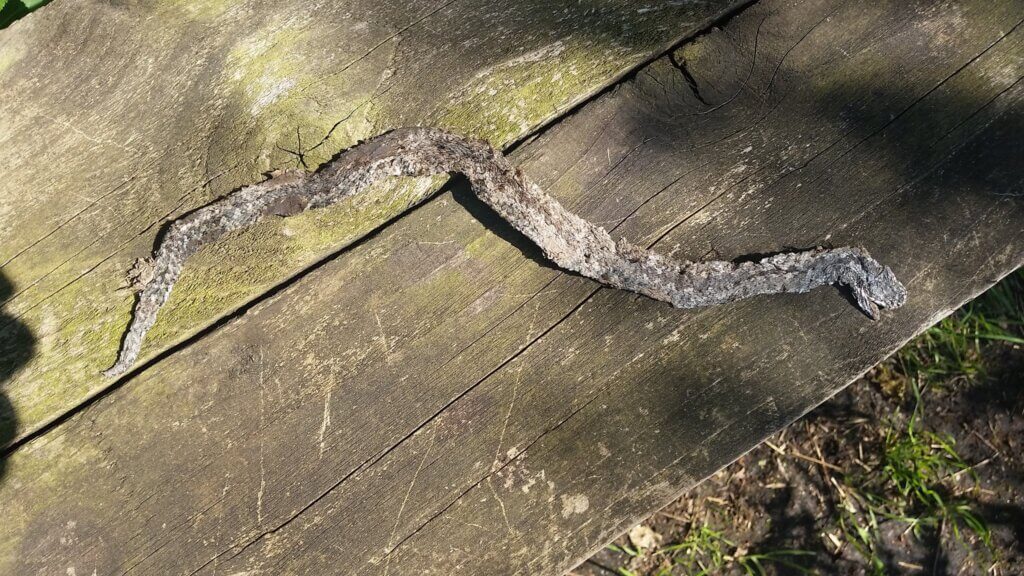
What a sorry tale. Natural England increasingly look like an organisation that cannot do anything right. Many thanks for your call for a review, it is plainly sorely needed.
It is somewhat aside from the serious management faliures you describe, but very few fires in the UK are from natural causes and far too many result from carelessness with single-use barbecues. “It’s the people not the barbecues” said one of my correspondents, which is true enough but sounds a bit too like the NRA arguing against gun control. So I’ve signed this petition, even if I don’t suppose the damned things will be banned, because it might generate a little thinking about how to reduce the number of these hugely damaging incidents: https://petition.parliament.uk/petitions/315762.
What a sorry tale of NE failures yet again, an organisation in serious need of a kick up the arse as well as probably some proper funding.
Such places are supposed to be repositories of our most precious nature and surely part of their protection is the education of those who use and all too frequently abuse them. In many ways anything we say is inadequate but we need the management of such sites to be more than adequate and part of that is surely planning for the unthinkable. Like Alan I too have signed that petition, common sense say these things should be banned.
Thanks Alan and Paul
In terms of an increased budget, a building which was originally looking at a £600k spend ends up costing the public purse in excess of £2.8M has me a tad worried about budgeting competencies. There are of course other examples but that seemed as good a one as any to offer.
Other issues of failure to listen to the science relayed through local knowledge and expertise was the construction of a viewing platform which caused a wintering Hen Harrier roost of many years to be abandoned, all for ‘public engagement’. NE expert ornithologist didn’t have a problem with the project.
Time will tell if there is any mitigation from this disaster, but I’ve not seen any sign of it yet.
I forwarded a link to the blog to an old friend in Misterton which is just down the road . He blames this bloke https://en.wikipedia.org/wiki/Cornelius_Vermuyden and says that many local houses claim that he stayed in them.
He says that years ago as a volunteer fireman he spent months putting fires out up there because of the peat drying out, and added that there has been a lot of soil erosion with roads becoming blocked.
Gary – yes, but who invited the Dutchman in? Read the book – it’s fascinating.
The history of the Humberhead Levels is indeed a fascinating one. Lands taken from the local community and an engineered drainage system attempted, sounds familiar even today?
You say “Read the book”, which one are you referring to? “MS in a Red Box” paints an evocative picture of the landscape prior to the engineered drainage. Stonehouse, Tomlinson? For anyone interested in the drainage history from a local perspective then Angus Townley’s “Drainage of the Isle of Axholme” via https://crowle.org/?p=3965 brings together much of the information for interested students.
Helen Kirk well done for all your efforts,you are an inspiration.Thanks for all you have done for nature and most importantly Hatfield Moors SSSi.
Thanks Alastair, I think you’re a tad too generous but I will keep on trying … we just need the next generation to take up the baton 😉
I am just one of many who have over decades tried to safeguard these community assets. Even Tony Juniper (Chairman of Natural England Board) mentions his involvement with them in Chapter 6 of his book “What Nature Does For Britain” so surely there is recognition and one can but hope he will want to ensure that they are passed to future generations in better condition?
We are fortunate that we have an amazing record of the wildlife and there have been occasional books (eg Catherine Caufield’s “Thorne Moors”) which provide an insight into the campaigns to save the sites. One day when they are truly safe I’d love to see an unexpurgated version published ….
If Natural England’s own wet lowland bog can burn for so long, their advice to moorland owners to re-wet their moors to prevent wildfires high up in the Pennines is seriously flawed. Fires only burn when there is an unmanaged fuel load
Thank you for your comment Richard which seems to relate more to grouse moor management than the devastating accident I report on, but in response to your points I’d comment that:
1. Heather dries out the surface of peat and thus the plant becomes dominant because it is able to cope better than most of its competitors.
2. Burning perpetuates the monoculture of heather cover and the drying of the peat surface at the expense of a more interesting and diverse habitat structure.
3. As I understand it there is no evidence to indicate fuel load management (but happy you send a link to peer reviewed literature) prevents wildfires. The fire on Saddleworth Moor I believe went through an area managed for grouse. The fire on Thursley a few weeks ago I understand happened despite the presence of firebreaks and management of vegetation to prevent wildfires.
4. I believe that around 33km square of vegetation is burned on English upland per annum. This equates to thousands of prescribed burns.
5. I would like to think that you’d agree that it is most important to address the source of wildfire ignition. Significant numbers originate from prescribed burns but almost all are anthropogenic in origin. Nobody is addressing this. It is like trying to address smoking disease or obesity by only dealing with patients who end up in hospital.
I am hopeful that NE will address the bulldozed timber consequential of the creation of emergency firebreaks by removal from site, but not through a burn (deliberate or miscreants).